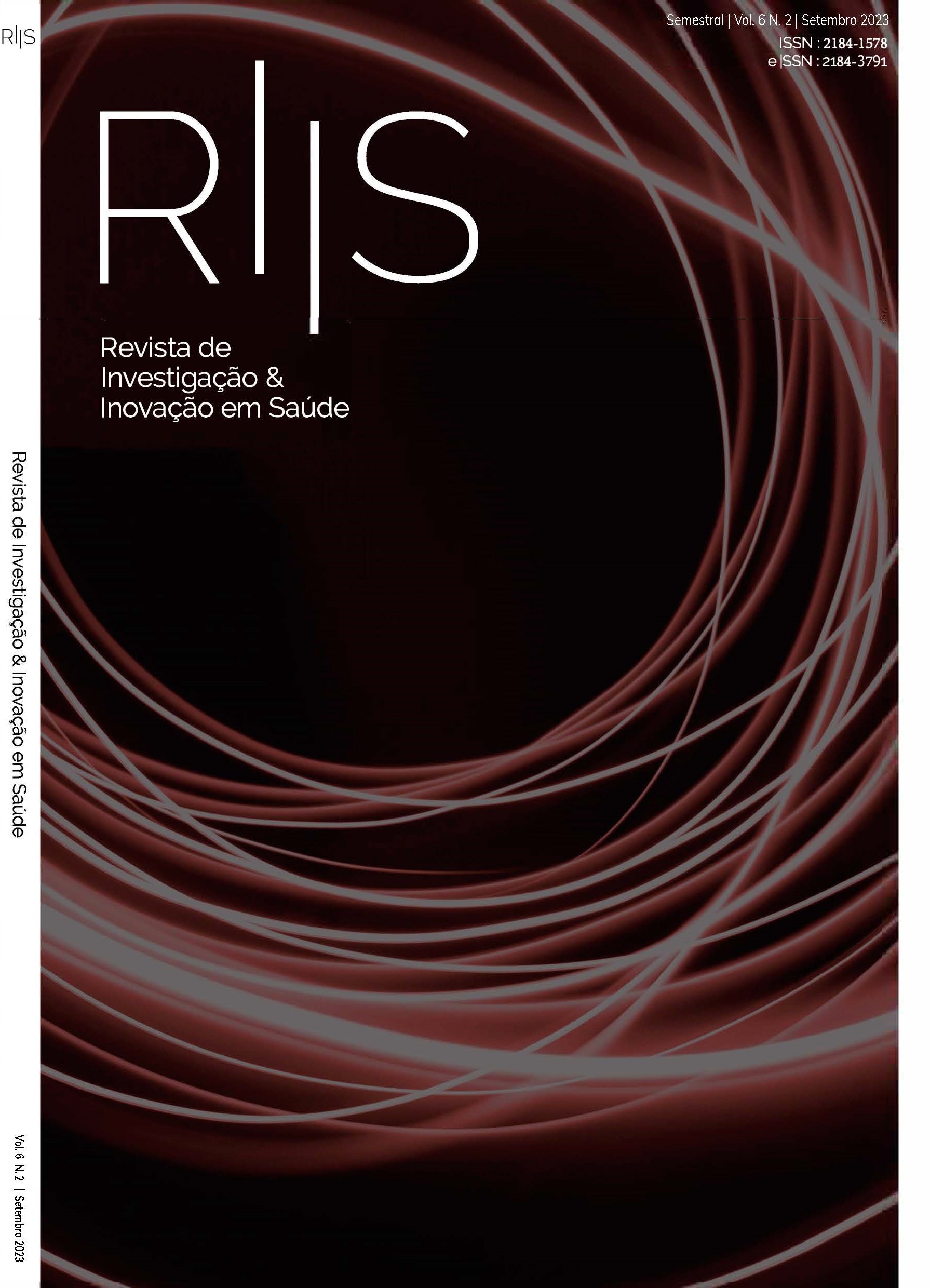Barriers to hand hygiene in na emergency service according to health professionals
DOI:
https://doi.org/10.37914/riis.v7i3.325Keywords:
hand hygiene, cross infections, hospital emergency serviceAbstract
Background: hand hygiene is considered the simplest and most effective measure to reduce healthcare-associated infections. Objectives: analyze the perception of health professionals in an emergency service about barriers to good hand hygiene practices. Methodology: quantitative, descriptive, correlational and cross-sectional study, developed in a medical-surgical emergency service in Portugal. Data collection using a sociodemographic characterization questionnaire and the application of the “Barriers to Adherence to Hand Hygiene” scale. 153 health professionals participated in the study. In processing the data, measures of central tendency, measures of dispersion, correlations, reliability studies and tests of differences in means were used. The study received a favorable opinion from the Health Unit's Ethics Committee. Results: the Evaluation & Feedback is the most valued barrier, while Training & Training was the least relevant as a barrier to hand hygiene. Statistically significant differences were found in all sociodemographic variables, with the exception of gender. Conclusion: knowledge of the barriers to hand hygiene practices allows us to identify weaknesses. Leadership involvement with the team is decisive for changing behavior.
References
Administração Central do Sistema de Saúde. (2021). Produção e Rácios de Eficiência. https://benchmarking-acss.min-saude.pt/MH_ProdRacioEficUrgenciaDashboard
Baek, E. H., Kim, S. E., Kim, D. H., Cho, O. H., Hong, S. I., & Kim, S. (2020). The difference in hand hygiene compliance rate between unit-based observers and trained observers for World Health Organization checklist and optimal hand hygiene. International journal of infectious diseases: IJID: official publication of the International Society for Infectious Diseases, 90, 197–200. https://doi.org/10.1016/j.ijid.2019.10.004
Belela-Anacleto, A. S., Peterlini, M. A., & Pedreira, M. D. (2017). Hand hygiene as a caring practice: a reflection on professional responsibility. Revista Brasileira de Enfermagem, 70(2), 442-445. https://doi.org/10.1590/0034-7167-2016-0189
Burnett, E. (2018). Effective infection prevention and control: the nurse's role. Nursing Standard, 33(4), 68-72. https://doi.org/10.7748/ns.2018.e11171
Chang, N. N., Schweizer, M. L., Reisinger, H. S., Jones, M., Chrischilles, E., Chorazy, M., Huskins, W. C., & Herwaldt, L. (2022). The impact of workload on hand hygiene compliance: Is 100% compliance achievable?. Infection control and hospital epidemiology, 43(9), 1259–1261. https://doi.org/10.1017/ice.2021.179
Costa, A., & Gaspar, P. (2017). Perfil de competências do enfermeiro no serviço de urgência. In M. Dixe, P. Sousa & P. Gaspar (Eds.), Construindo conhecimento em enfermagem à pessoa em situação crítica (1ª ed., pp. 49-67). Instituto Politécnico de Leiria. https://iconline.ipleiria.pt/bitstream/10400.8/2877/1/PSC_Ebook.pdf
Cunha, Q., Camponogara, S., Freitas, E., Pinno, C., Dias, G., & Cesar, M. (2017). Fatores que interferem na adesão às precauções padrão por profissionais da saúde: Revisão integrativa. Enfermagem em Foco, 8(72). https://doi.org/10.21675/2357-707X.2017.v8.n1.980
Direção-Geral da Saúde. (2017). Programa de Prevenção e Controlo de Infeções e de resistência aos antimicrobianos. https://www.sns.gov.pt/wp-content/uploads/2017/12/DGS_PCIRA_V8.pdf
Doutorado, C., Barros, D., Vasconcelos, R., & Santos, A. (2017). Survey on knowledge, attitude and hygiene practice of hands by nursing professionals. Revista de Enfermagem UFPE, 11, 1136-1145. https://dx.doi.org/10.5205/reuol.10544-93905-1-RV.1103201703
Graveto, J. M., Rebola, R. I., Fernandes, E. A., & Costa, P. J. (2018). Hand hygiene: nurses adherence after training. Revista Brasileira de Enfermagem, 71, 1189-1193. https://doi.org/10.1590/0034-7167-2017-0239
Grupo Coordenador Local – Programa de Prevenção e Controlo de Infeções e de Resistência aos Antimicrobianos. (2020). Relatório de Atividades. Centro Hospitalar do Tâmega e Sousa. EPE. GCL-PPCIRA
Issa, M., Dunne, S. S., & Dunne, C. P. (2023). Hand hygiene practices for prevention of health care-associated infections associated with admitted infectious patients in the emergency department: a systematic review. Irish journal of medical science, 192(2), 871–899. https://doi.org/10.1007/s11845-022-03004-y
Kim, J., Yu, S.N., Jeong, Y.S. Yu, S.N., Kim, J.H., Jeon, M.H., Kim, T., & Choo, E. J. (2023). Hand hygiene knowledge, attitude, barriers and improvement measures among healthcare workers in the Republic of Korea: a cross-sectional survey exploring interprofessional differences. Antimicrob Resist Infect Control, 12(1), 93. https://doi.org/10.1186/s13756-023-01296-y
Le, C., Lehman, E., Nguyen, T., & Craig, T. (2019). Hand Hygiene Compliance Study at a Large Central Hospital in Vietnam. International Journal of Environmental Research and Public Health, 16(4). https://doi.org/10.3390/ijerph16040607
Lien, T. Q., Johansson, E., Lan, P. T., Chuc, N. T. K., Thoa, N. T. M., Hoa, N. Q., Phuc, H. D., Tamhankar, A. J., & Lundborg, C. S. (2018). A Potential Way to Decrease the Know-Do Gap in Hospital Infection Control in Vietnam: "Providing Specific Figures on Healthcare-Associated Infections to the Hospital Staff Can 'Wake Them Up' to Change Their Behaviour". International journal of environmental research and public health, 15(7), 1549. https://doi.org/10.3390/ijerph15071549
Maroco, J. (2003). Análise Estatística com utilização do SPSS. Edições Sílabo
Oliveira, M., Menezes, L., Filho, J., Leite, M., Fernandes, L., Santos, A., Correia, K. (2019). Hand hygiene: knowledge and attitudes of healthcare professionals. Revista de Enfermagem UFPE, 13, 33-37. https://doi.org/10.5205/1981-8963.2019.236418
Pestana, M. H., & Gageiro, J. N. (2003). Análise de dados para ciências sociais: A complementaridade do SPSS. (3ªed.). Edições Sílabo.
Pisoeiro, Z., & Gaspar, P. (2014). Hand hygiene compliance. Barriers perceived by healthcare professionals. In P. Sousa, F. Serranheira & A. S. Uva (Eds.), Livro de proceedings do 4º Congresso Internacional de Qualidade em Saúde e Segurança do Doente (1ª ed., pp. 201-210). Congresso Internacional de Qualidade em Saúde e Segurança do Doente. https://www.researchgate.net/publication/262663695_Hand_hygiene_compliance_Barriers_perceived_by_healthcare_professionals
Puro, V., Coppola, N., Frasca, A. et al. (2022). Pillars for prevention and control of healthcare-associated infections: an Italian expert opinion statement. Antimicrobial Resistance & Infection Control, 11, 87. https://doi.org/10.1186/s13756-022-01125-8
Saiz, C. (2020). Pensamiento Critico y Eficácia. (2ª ed.). Pirámide.
Seo, H. J., Sohng, K. Y., Chang, S. O., Chaung, S. K., Won, J. S., & Choi, M. J. (2019). Interventions to improve hand hygiene compliance in emergency departments: a systematic review. Journal of Hospital Infection, 102(4), 394-406. https://doi.org/10.1016/j.jhin.2019.03.013
Shim, J. Y., Park, S., Kim, G. E., Jeong, Y. S., Kim, J. H., Lee, E., Lee, E. J., Kim, T. H., & Park, S. Y. (2019). Does Physician Leadership Influence Followers' Hand Hygiene Compliance?. Open forum infectious diseases, 6(6), ofz236. https://doi.org/10.1093/ofid/ofz236
Silva, J. K., Matos, E., & Souza, S.S. (2020). Care bundle for both prevention and control of hospital-acquired infection in adult emergency service. Revista de Pesquisa Cuidado é Fundamental Online, 12, 176–182. https://doi.org/10.9789/2175-5361.rpcfo.v12.7192
Thandar, M. M., Rahman, M. O., Haruyama, R., Matsuoka, S., Okawa, S., Moriyama, J., Yokobori, Y., Matsubara, C., Nagai, M., Ota, E., & Baba, T. (2022). Effectiveness of Infection Control Teams in Reducing Healthcare-Associated Infections: A Systematic Review and Meta-Analysis. International journal of environmental research and public health, 19(24), 17075. https://doi.org/10.3390/ijerph192417075
Trannin, K., Vancini-Campanharo, C., Lopes, M., Okuno, M., & Batista, R. (2016). Adesão à higiene das mãos: intervenção e avaliação. Cogitare Enfermagem, 21. https://doi.org/10.5380/ce.v21i2.44246
World Health Organization. (2009). Guidelines on Hand Hygiene in Health Care. First Global Patient Safety Challenge Clean Care is Safer Care. WHO. http://apps.who.int/iris/bitstream/handle/10665/44102/9789241597906_eng.pdf?sequence=1
World Health Organization. (2011). Report on the Burden of Endemic Health Care-Associated Infection Worldwide. WHO. https://iris.who.int/bitstream/handle/10665/80135/9789241501507_eng.pdf
World Health Organization. (2021). Draft Global Patient Safety Action Plan 2021-2030. WHO. https://www.who.int/teams/integrated-health-services/patient-safety/policy/global-patient-safety-action-plan
Yadav, S. K., Semwal, R. S., Piyush, A., & Nath, B. (2019). Knowledge, attitude and perceived barriers of doctors towards hand hygiene in a govt. tertiary care hospital. Journal of Preventive Medicine and Holistic Health, 5(2), 91–98. https://doi.org/10.18231/j.jpmhh.2019.018
Downloads
Published
How to Cite
Issue
Section
License
Copyright (c) 2024 Filomena Silva, Pedro Costa, Fátima Braga, Silvana Martins

This work is licensed under a Creative Commons Attribution 4.0 International License.















